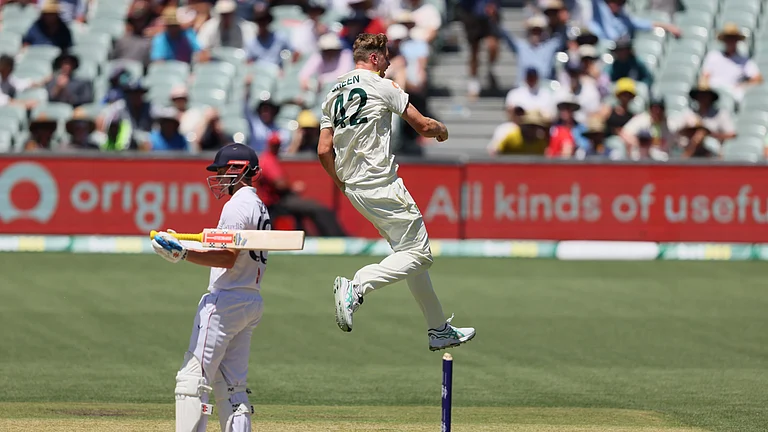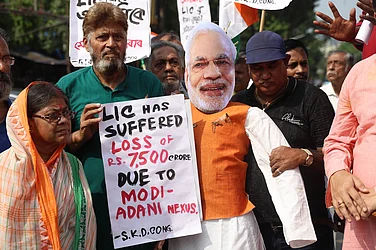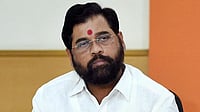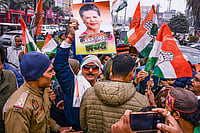The recurring and methodical attacks on security forces and the police in the last fortnight in Jammu and Kashmir have kicked off a fresh round of debate on the ceasefire initiative. With the government failing to consolidate on its peace offensive, in fact not even making a symbolic gesture of starting a political dialogue, there is considerable apprehension within the security establishment on the prolonged Ramzan move.
"A ceasefire is a political measure and only makes sense if it is a component of a larger strategy to win peace. There is nothing (of that sort) happening," exclaims a senior officer in the Srinagar-based 15 Corps. There has been little benefit accruing from the third extension of the ceasefire call, first announced in November last year, but on the other hand, attacks by militants have continued unabated.
That militants had been targeting security forces and their camps before the ceasefire was known. But such raids were few and far between. However, the nature of attacks in the last two months is a clear indicator of an increased brazenness and a higher degree of planning.
The storming of the Police Control Room in the heart of Srinagar and the killing of seven policemen in Kokernag, both in February, followed this month by the killing of 17 cops in Rajouri, the killing of a colonel in Anantnag and the storming of the battalion headquarters in Baramulla where four soldiers were killed, is sufficient proof. "There are at least three to four major attacks a month which has enough shock value," says a Rashtriya Rifles officer.
Prior to the ceasefire, the army suffered most of the casualties in remote and hilly areas of the state such as Trehgam, Chokibal, Surankote, Mendhar and Mahore. There has been a dramatic shift in the last two months. "Militants have been able to establish hideouts in major towns in Anantnag, Baramulla and Srinagar," says A.K. Suri, the state’s police chief (see interview). That by itself is worrying, for it would mean militants could choose their time and target to launch an attack. Security officials now admit that the audacious attack at Srinagar airport by the Lashkar-e-Toiba and the killing of six Sikhs in Mehjoor Nagar recently could not have happened if the militant groups had not set up base and fine-tuned their logistics inSrinagar.
The first ceasefire call in November, which captured the public imagination in the terror-consumed Valley, has undoubtedly given way to acute despondency. The spiralling violence, allegations of torture and custodial killings of innocents by the police and the spontaneous protests by the locals in the Valley have made a travesty of the original intent.
Having failed to articulate a fresh set of measures in the two extensions, which could have built on the goodwill generated, the bjp-led government is still floundering. "Even two weeks after the last extension, there is confusion. Where is the dialogue?" demands an army commander.
Those words ring true. Many expected Atal Behari Vajpayee’s unexpected call of an extension by three months as the opening gambit of a larger gameplan. However, that seems to be just mired in good intentions. The initiative is gradually wasting away.
Despite the passage of four months, the government is yet to take a decision on whether or not to allow a delegation of the All Parties Hurriyat Conference (aphc) to visit Pakistan. Starting a dialogue with the aphc moderate elements and other like-minded groups has also been delayed. Home minister L.K. Advani’s sudden statement on March 7 that the Hurriyat would not be allowed to act as a "mediator" between India and Pakistan has only compounded the confusion. To a large extent, persisting differences within the nda government on a possible forward movement has only stalled the prospect of reopening political negotiations.
With confusion reigning, there has been a spin-off on the position of the security forces. The spurt in attacks has consequently prompted a rethink on the part of the military establishment, originally one of the principal advocates of the Kashmir ceasefire. Having taken a solid beating in the last three months, a section of the military establishment reportedly feels that it be allowed to observe the ceasefire rules only with regard to those groups interested in promoting peace in Kashmir. Loosely translated, this section feels that counter operations be allowed to continue against the Lashkar-e-Toiba and the Jaish-e-Mohammed, the main perpetrators of violence. "On the ground, we do not seem to be making any gains. All our cordon-search operations, frisking and smashing suspect militant hideouts have come to a halt," says an army captain.
The ambush of Brig Bikram Singh and Col J.P. Janu’s convoy in Anantnag on March 1 and the killing of 17 police personnel in Rajouri a day later have clearly shown that the militants have regrouped and are able to mount a coordinated attack on the security forces. "The boldness of the attacks should be a pointer to their morale and also a measure of infiltration which has happened recently in the Valley," says a state police official.
The only tangible gain from the ceasefire has been quiet on the Line of Control as well as a drop in firing on the Actual Ground Position Level on the Siachen sector. However, the unrelenting and ferocious attacks on the security establishment has put pressure on them to unholster their guns.
That pressure may just mount if there is no political momentum in the coming days. With summer barely a month away, when the snow melts and the passes become more porous, infiltration in the Valley can only increase. By that time, many in the Valley feel that a package must be in place. Otherwise, the gains from the ceasefire would be frittered away. The goodwill of the local populace would have been lost and the frightening spectre of increased violence would have to be contended with. n


























